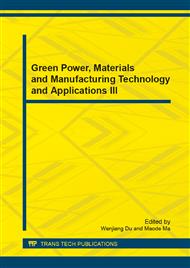p.986
p.991
p.996
p.1001
p.1006
p.1012
p.1017
p.1022
p.1029
Study on Component Composition Frame Based on XCM Model
Abstract:
This paper defines the components of component assembly from the selection and instantiation of component, defines the component connection from the component interface, and defines the component assembly from the component event mechanism and the deployment based on the container, flexibly using component assembly operational characters in component assembly, so as to put forward the component assembly frame based on XCM. The assembly frame provides the unified description mechanism for component assembly, thus effectively solving the interaction problem in the component assembly process.
Info:
Periodical:
Pages:
1006-1011
Citation:
Online since:
January 2014
Authors:
Keywords:
Price:
Сopyright:
© 2014 Trans Tech Publications Ltd. All Rights Reserved
Share:
Citation:


